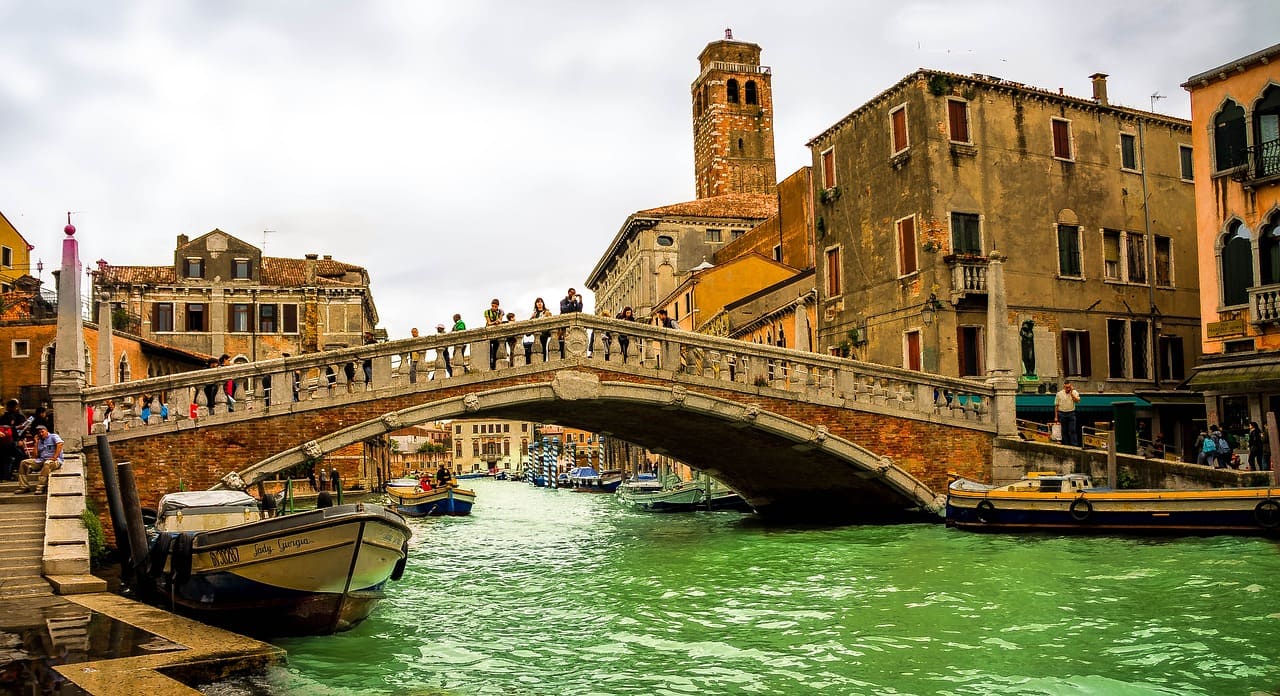
A Journey through Italian Linguistic Evolution, Origins, and Influences
The Italian language, with its melodious cadence and rich cultural heritage, stands as a testament to the intricate interplay of history, geography, and human evolution. Tracing its origins and journey through time unveils a fascinating linguistic tapestry that reflects the soul of a nation and the resilience of its people.
In this exploration of the origin and history of the Italian language, we delve into its ancient roots, the evolution of dialects, and the unifying force that shaped modern Italian.
Origins of the Italian Language and The Fragmentation of Latin
The story of the Italian language finds its earliest chapters in the heart of the Roman Empire. Latin, the precursor of Italian, emerged as the dominant language in the Italian Peninsula as Roman legions conquered new territories and established a vast empire. However, the roots of the language's evolution reach further back in time.
As the Roman Republic expanded, it encountered diverse cultures and languages. The Etruscans, who inhabited the region before Rome's rise, contributed linguistic influences to evolving Latin. Additionally, Greek colonies in southern Italy and Sicily left their mark on the linguistic landscape. This blending of linguistic elements formed the basis for the varied palette that would eventually give rise to the Italian language.
The collapse of the Western Roman Empire in the 5th century CE represented a crucial turning point in the trajectory of the Italian language. The previously cohesive Latin language began to fracture into discrete dialects as communication networks deteriorated and regional isolation became more pronounced. Within the Italian Peninsula, this phenomenon was particularly pronounced, giving rise to a diverse array of regional dialects from the remnants of Latin.
These dialects, influenced by the nuances of geography, cultural practices, and interactions with neighboring communities, gradually took hold in various regions. Their development served as the bedrock upon which the Italian language would eventually thrive.
Italian Dialects - Evolution through the Ages
The disintegration of the Roman Empire marked a turning point in the history of the Italian language. With the empire's decline, communication networks weakened, leading to linguistic fragmentation. Isolated communities developed distinct dialects, each influenced by local culture, geography, and contact with neighboring regions.
The medieval period witnessed the flourishing of these dialects, each becoming a reflection of the unique communities that spoke them. Tuscan, with its literary prominence and the works of poets like Dante Alighieri, began to ascend, setting the stage for a standardized form of Italian. Dante's magnum opus, "The Divine Comedy," showcased the potential of vernacular languages for high literature, challenging the dominance of Latin.
The Rise and Standardization of Italian through Tuscan - A Renaissance Legacy
During the Italian Renaissance, the need for a unified medium of communication became increasingly apparent amidst the flourishing trade and commerce across Italy. The dialect of Tuscan, particularly as it was articulated in Florence, emerged as the preferred linguistic standard due to its considerable literary and cultural stature. Esteemed figures such as Petrarch and Boccaccio, by employing this dialect in their literary compositions, significantly contributed to its prominence and acceptance. This epoch was important for the establishment of a standardized Italian language, as concerted efforts were made to systematize grammar, vocabulary, and syntax.
The introduction of the printing press by Johannes Gutenberg was a crucial event in the history of language dissemination. It enabled the mass production of texts, thereby facilitating the spread of standardized written Italian across a broader demographic.
In this context, the foundation of the Accademia della Crusca in 1582 represented a critical development in the linguistic history of Italy. The academy was dedicated to the preservation, regulation, and refinement of the Italian language, focusing on ensuring its purity, elegance, and sophistication. Through its efforts, the Accademia della Crusca significantly influenced the evolution of Italian, providing a definitive guide for vocabulary and grammar that underscored the language's status and facilitated its adoption as a national standard.
Italian Language Unification and Beyond
The 19th century witnessed the unification of Italy, culminating in the formation of a single nation-state. Language played a pivotal role in this unification process, as it became a potent tool for creating a sense of national identity. The Italian language transcended regional boundaries, bringing together diverse cultures, traditions, and histories.
However, this period was not without its challenges. The persistence of regional dialects and linguistic diversity presented hurdles in the path to linguistic unity. While efforts were made to promote standard Italian, regional identities remained deeply entrenched in the linguistic fabric of Italy.
The Contemporary Landscape - Italian in the Modern World
In the modern era, the Italian language, as one of the Romance languages, continues to flourish as a vital component of global culture and communication. It has left an indelible mark in various fields, including art, literature, music, and cuisine. Italian opera, with composers like Verdi and Puccini, has captivated audiences worldwide, while Italian fashion and design have set international trends.
The digital age has both facilitated and challenged the Italian language. The internet has enabled the dissemination of Italian culture and language to a global audience, fostering connections and exchanges. Simultaneously, informal communication through social media and digital platforms has given rise to new linguistic dynamics, including the use of emojis, abbreviations, and neologisms.
Preserving Heritage of Italian Language - Challenges and Future Prospects
While the Italian language has overcome countless hurdles in its history, it faces contemporary challenges as well. The global dominance of English, particularly in technology, media, and academia, presents a significant obstacle. The prevalence of informal language and slang in online communication, platforms like social media and messaging apps, can potentially impact formal Italian usage, especially among younger generations. Additionally, the persistent allure of regional dialects, strong in various parts of Italy, creates a complex linguistic landscape.
Efforts to address these challenges are multifaceted. Language education remains a cornerstone, fostering a sense of linguistic pride and proficiency among younger generations. Media, including television, literature, and high-quality online content, continues to play a vital role in promoting standardized Italian while reflecting evolving linguistic trends. Additionally, language policies, such as promoting Italian language use in public spaces and supporting Italian language media production, aim to strike a balance between preserving linguistic heritage and embracing linguistic evolution. Despite these challenges, the Italian language retains a strong cultural and historical significance within Italy and continues to be spoken by millions globally.
The origin and history of the Italian language is a captivating journey through time, culture, and human expression. From its roots in ancient Latin to its modern-day vibrancy, Italian stands as a living chronicle of identity, resilience, and evolution. The language's ability to adapt and transform while retaining its essence is a testament to the profound connection between language and the human experience. As Italy moves forward, the Italian language remains an enduring symbol of unity, heritage, and the shared journey of its people.







